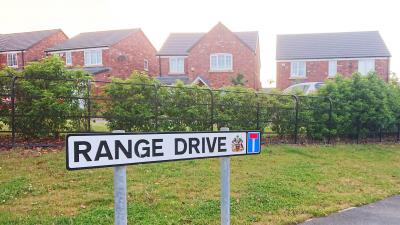Does my new outbuilding need building regulations approval?
With the increase in people working from home during the pandemic, it seems a useful time to revisit the topic of building regulations and small detached buildings, especially those that are to be constructed in domestic settings as home offices, workshops and other uses.
As a rule, the construction of any new building is likely to be work that is controlled under the building regulations. However, there might be cases where some small, detached buildings can be treated as exempt from them. Previous LABC articles have touched on exempt or garden buildings, but here we’ll discuss small detached buildings in a little more depth.
Under the building regulations the erection of a building is treated as controlled building work – to which the building regulations must be applied and for which a notice must be given to the local authority before the work begins.
However, building regulation 9 allows some exceptions. These exceptions – or exemptions – can be found in Schedule 2 of the regulations.
The circumstances that permit three types of small, detached buildings to be exempt from the building regulations can be found in Class 6 of the Schedule (one of these is an air-raid shelter!).
This article focuses only on the following Classes of exempt small, detached buildings:
- Those with a floor area not exceeding 30m2; and
- Those with a floor area not exceeding 15m2
To be exempt from the regulations they must have the features listed below and they must not contain any sleeping accommodation (no beds in sheds).
Small, detached buildings less than or equal to 30m2
These must be single storey – a roof mezzanine or loft floor would not be permitted, and:
- The internal floor area must not be greater than 30m2 (for example 3m x 10m, or 5m x 6m), and
- The building must be constructed substantially of non-combustible material unless it is 1m or more away from any boundary.
These types of buildings are typically used as garages, workshops, home offices, garden rooms, saunas, solariums, indoor pools.
The boundary measurement rule is important as features such as fascias, soffits, guttering, rainwater pipes - anything that is part of and protrudes from the building - can be counted as being a point from which the closeness to the boundary can be measured. If any part of the building is between 0m to 0.999m then the materials that can be used for construction must be controlled.
In the case of a building closer than 1m to the boundary – to retain the exemption status – materials must be, in the main, non-combustible. That means they should be, for example, walls of brick, block, concrete panel, steel frame with metal cladding etc, and roofs of slate, clay or concrete tiles, or metal cladding.
If the building is 1m or more away from the boundary there are no restrictions on the type of materials that can be used.
Small, detached buildings less than or equal to 15m2
These are not limited to being single storey.
- The internal floor area must not be more than 15m2 (for example 3m x 5m, or 2-storeys of 7.5m2 each).
- There are no restrictions in relation to the closeness to the boundary, or the type of materials that must be used.
These smaller buildings can be constructed anywhere within the boundaries of the site (in the garden of a house, for example) and can be constructed from any material – for example it can be a wooden shed, gazebo, sauna, log-cabin, or fabric tent, or plastic playhouse etc.
It's important to know that the 'floor area' of the building means the aggregate area of every floor in the building, calculated by reference to the finished internal faces of the walls enclosing the area, or if at any point where there is no wall, by reference to the outermost edge of the floor. For example, in the case of a garage, if part of one wall is made up of a garage door, the measurement would be to the outside edge of the floor slab.
If the physical features or use do not fit with the rules for exempt status, this does not mean that the building can't be built, it just means that the work is controlled and must be notified to the council under the building regulations, and that a Full Plans or Building Notice application must be made, and the work must be inspected. (Visit the LABC Front Door website for information on how to apply for building regulations approval.)
Queries can also be discussed with your local authority building control team before you make an application - you can find their direct contact details using the LABC postcode search above.
If the detached building can be treated as exempt then other features can be classed as being exempt too – such as the provision of any toilets, showers, boilers or wood-burning stoves etc. inside the building, so long as these features do not materially change the status of the exemption.
To clarify how this work is controlled:
- The installation of any electrics where the electricity is from a source shared with or located inside a dwelling, in which case the installation must comply with Part P of the regulations and is notifiable work through a competent persons scheme.
- The installation of cold or hot water supplies from a source shared with or located inside any building other than a building or extension of a kind also described in Schedule 2, in which case the work must comply with Parts G1 – Cold water supplies and G3(2) & (3) Hot water storage systems of the building regulations - and is notifiable work.
- The extension of any existing drainage system to serve the exempt detached building, in which case the extended drainage must comply with Parts H1 – Foul drains; H2 – Wastewater treatment and cesspools; H3 – Rainwater drainage, where applicable however the drainage is part of the exemption and so doesn't have to be notified to the local authority.
- Whether a building can be treated as fully exempt from the building regulations or not, there are other matters that must also be considered and/or addressed before any work begins.
- Will the building require planning permission? (External link to the LABC Front Door website for further information.)
- Will a building over agreement (BOA) be required from the sewer authority – in the case of the building being constructed on or close to a public sewer?
- Will permission be required from the gas, electricity, or water authorities for building over or close to any pipes or cables?
Ignoring the above, regardless of building regulations, could result in a fine and/or the building being removed. Similarly, exemption from building regulations does not mean that the building should be unsafe and advice from a qualified and competent construction professional should always be obtained before embarking on such a project, to ensure the building is both safe and compliant. (Read the Front Door advice on choosing and working with a builder.)
Finally, where an existing exempt building is added to, by an extension, and the floor area increases to a point that the building is no longer exempt, this would be treated as a material change of use and the building regulations would apply to both the extended part and the existing building, and the work would be controlled and notifiable.
Further information
Building Regulations Part H (England): Drainage and Waste Disposal
Building Regulations Part H (Wales): Drainage and Waste Disposal
Please Note: Every care was taken to ensure the information was correct at the time of publication. Any written guidance provided does not replace the user’s professional judgement. It is the responsibility of the dutyholder or person carrying out the work to ensure compliance with relevant building regulations or applicable technical standards.
This article was reviewed and updated on 10 August 2023
Sign up to the building bulletin newsletter
Over 48,000 construction professionals have already signed up for the LABC Building Bulletin.
Join them and receive useful tips, practical technical information and industry news by email once every 6 weeks.
Subscribe to the Building Bulletin





Comments
LABC response
Submitted 2 years 1 month ago
Thank you for your recent question. The limitations that apply to small single-storey buildings being exempt from the building regulations are those contained in Regulation 9 (https://www.legislation.gov.uk/uksi/2010/2214/regulation/9) and Schedule 2 (https://www.legislation.gov.uk/uksi/2010/2214/schedule/2) of the Building Regulations 2010 (as amended)(https://www.legislation.gov.uk/uksi/2010/2214/contents).
We recommend that you seek the advice of a property professional such as an architect, building surveyor, or structural engineer, who might be ab le to advise you better about your intended works and how this might be affected by building regulations. Alternatively, to discuss your proposal with your local councils building control department, who are the enforcing authority for the building regulations in your area and who will decide if the work is controlled/notifiable or not.
We are not aware of there being any restrictions to there being multiple exempt small buildings on a site and these might often be seen as small stables, sheds, garages, carports, and other similar outbuildings. However, the proximity of such buildings to one another might be a material factor that has to be considered, especially if two buildings closely adjoin and could become conjoined with a limited amount of work, or if they are to share foundations or floor slabs.
We would also suggest that you seek advice about whether the proposal will require Planning Permission from your local council and if you need to discuss the position of the buildings with utility companies – especially if the buildings are to be erected over a drain that might be a transferred sewer, as well as with gas, electricity and clean water services suppliers – to ensure that utility services are not impacted by the works.
Best,
LABC team
I was not informed by Local Authority
Submitted 1 year 11 months ago
I phoned Building Control at the local authority and was told that Building Control request was made by our neighbours November 2022 and I could see it on the Local Authority website! I noted there was the possibility of making comments about the application - but as I was not informed that an application had been made, I had no chance of doing that!!!
What can I do now??? As the building appears to be too close to my boundary with a flammable exterior?
LABC response
Submitted 1 year 11 months ago
Thank you for your enquiry. LABC cannot assist with the specific details of your concerns; however, I hope the following can help. Some of the issues you have raised are covered by planning legislation and some by building control. You appear to have spoken to the planning department; however, I recommend you discuss this issue with your building control department also. You can find the contact details of your relevant building control team by entering your postcode in the search box at the top right-hand side of our website.
Best,
LABC team
Timber frame garage
Submitted 1 year 10 months ago
Thanks
LABC Response
Submitted 1 year 9 months ago
Thank you for your enquiry. However, the answer will be dependent upon your particular circumstances, and this is not something that LABC can help with. Please discuss the details of your proposals with your professional advisors and contact the Building Control team at your Local Authority to discuss project specific requirements. You can find the contact details of the relevant Building Control team by entering your postcode in the search box at the top right-hand side of our website.
We are sorry we cannot be of further assistance, but hope you find the above to be of some help.
Best,
LABC Team
Exempt outbuildings
Submitted 1 year 9 months ago
LABC Response
Submitted 1 year 7 months ago
Thank you for your enquiry.
The following response is my opinion on behalf of LABC, it is not a definitive interpretation of the legislation and remains a matter for the relevant enforcing authority to determine.
Regulation 9 of the Building Regulations states that buildings detailed in Schedule 2 of the Building Regulations are exempt, save for a few exceptions detailed further down. With relation to your query, the relevant part of Schedule 2 defines an exempt small detached building as either:
1) A detached single storey building, having a floor area which does not exceed 30m2, which contains no sleeping accommodation and is a building—
(a) no point of which is less than one metre from the boundary of its curtilage; or
(b) which is constructed substantially of non-combustible material.
or
2) A detached building, having a floor area which does not exceed 15m2, which contains no sleeping accommodation.
So, in summary, for the proposed building to be exempt from Building Regulations, it must comply with either of the above - but, of course, there may be slightly different criteria for the purposes of permitted development rights that you may also need to consider. However, please note that even for buildings that are exempt from the building regulations, they must observe all of the following where applicable:
• If any cold or hot water supply is shared with your dwelling, they must comply with the applicable requirements of Part G of the Building Regulations.
• If the exempt building receives its electricity from a source shared with or located inside your dwelling, it must comply with the applicable requirements of Part P of the Building Regulations.
• If the exempt building shares drainage with your dwelling, the connection must comply with the applicable requirements of Part H of the Building Regulations.
If you are in any doubt about the status of the proposed works, I would recommend seeking the assistance of a competent designer and/or contact the Building Control Team at your Local Authority.
Regards,
LABC
Attached Garage/Storage at the back of house
Submitted 1 year 6 months ago
Would this require any building regs/planning?
LABC Response
Submitted 1 year 6 months ago
Thank you for your comment.
The following response is my opinion on behalf of LABC, it is not a definitive interpretation of the legislation and remains a matter for the relevant enforcing authority to determine.
LABC is unable to provide advice on matters relating to planning legislation - so would recommend that you review the guidance on www.planningportal.co.uk/permission and seek advice from the planning team at your Local Authority.
With regards to the Building Regulations, from the description provided the works do NOT seem to fall within any of the exemptions detailed in Schedule 2 of the Building Regulations 2010 - therefore it is likely that Building Regulations approval should have been sought prior to commencing works. For more information on how to resolve this issue, you may find it useful to read the following LABC article - https://shorturl.at/suNY6
Kind regards,
LABC
"significantly non- combustible" term
Submitted 1 year 4 months ago
Ychwanegu sylw newydd